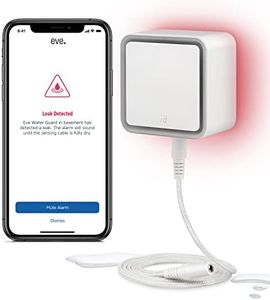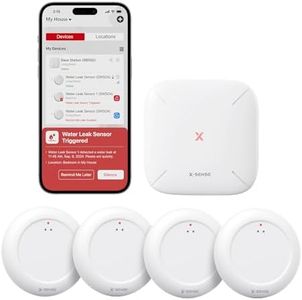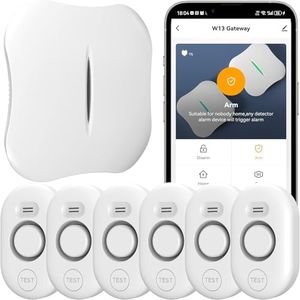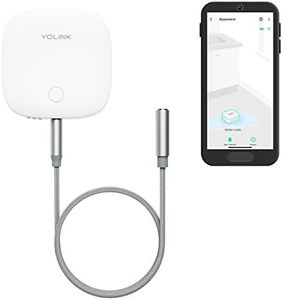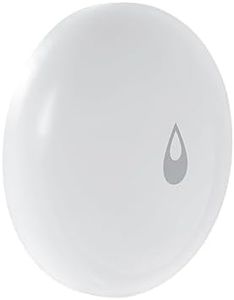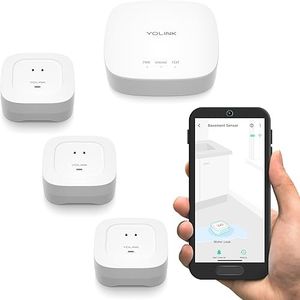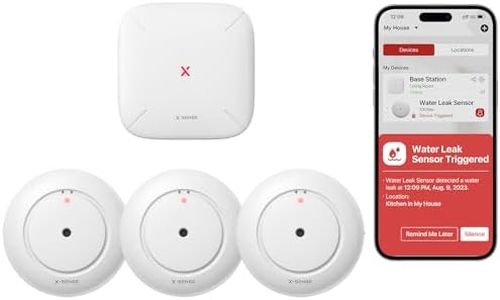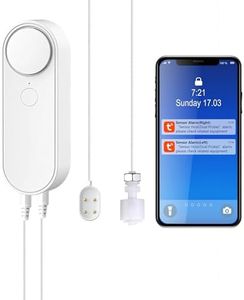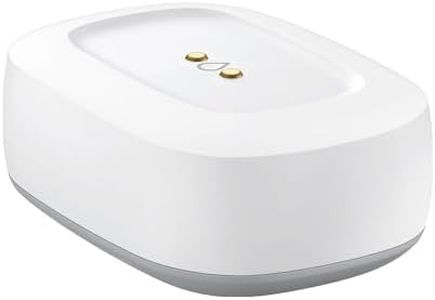We Use CookiesWe use cookies to enhance the security, performance,
functionality and for analytical and promotional activities. By continuing to browse this site you
are agreeing to our privacy policy
10 Best Wifi Water Leak Sensors
From leading brands and best sellers available on the web.Buying Guide for the Best Wifi Water Leak Sensors
Choosing a WiFi water leak sensor can be a great way to protect your home from water damage by catching leaks early. When shopping for the right sensor, it’s important to understand not just how these devices work, but which features and specifications will fit your needs best. Think about where you plan to place the sensor, how you’ll receive alerts, and how reliable you need it to be. Deciding what is most important for your situation will help you pick a sensor that gives you peace of mind.Detection MethodThe detection method refers to how the sensor actually identifies water leaks, often using metallic probes that close a circuit when in contact with water. Some sensors only detect direct contact with a leak, while others come with cables or probe extensions for wider coverage. If you have a narrow area, a basic contact sensor may be enough, but for larger spaces like basements, a sensor with an extension cable can help spot leaks further afield. Choose based on how much area you need to cover and how precise you want the detection to be.
WiFi CompatibilityWiFi compatibility describes the wireless standard the sensor uses to connect to your home network, often 2.4 GHz. Not all sensors support both 2.4 GHz and 5 GHz; most use 2.4 GHz for better range. If your router only supports one band, check this is compatible. The further your sensor is from your router, the more range matters—this is especially important in larger homes or difficult-to-reach places. Make sure the sensor will reliably connect from the spot you plan to use it.
Power SourcePower source indicates how the sensor is powered, usually by batteries or AC power. Battery-powered sensors are easier to place anywhere without worrying about plugging them in, but you'll need to monitor and replace batteries periodically. Wired sensors offer continuous power but must be near an outlet, limiting placement options. If you want flexibility for placing sensors in hard-to-reach or remote spots, battery-powered might be best; for long-term, maintenance-free use in accessible spots, a wired sensor can be convenient.
Alert Notification MethodAlert notification method explains how you are informed when a leak is detected. Most WiFi sensors will send push notifications through a smartphone app, while others may also include audible alarms or can send emails or even connect with smart home systems for advanced alerting options. Consider if you need immediate, mobile notifications all the time, or if you would also benefit from a loud local alarm for people in the house. Matching the alert style to how you want to be notified is key.
Integration with Smart Home SystemsIntegration with smart home systems describes how well a sensor works with other smart devices, such as voice assistants or home automation hubs. If you already have a smart home setup, you may want a sensor that can work with it so you can, for example, trigger automatic shut-off valves or get alerts through other smart devices. If you’re not using smart devices, a standalone sensor without integration might be simpler and all you need.
Sensitivity and Response TimeSensitivity and response time refer to how quickly the sensor detects water and sends an alert. Some sensors react instantly, while others might require a few seconds. Very sensitive sensors can trigger on very small leaks or even condensation, while less sensitive ones might only trigger if there is a significant puddle. Choose high sensitivity and quick response for areas where early detection is absolutely critical; opt for less sensitivity if you want to avoid false alarms due to humidity or minor splashes.
Durability and Water ResistanceDurability and water resistance means how well a sensor can withstand harsh conditions, including prolonged exposure to water or even brief submersion. Sensors in basements or near sump pumps may need higher durability, while those in less risky spots might not. Look for sensors rated for water resistance if they need to work in tough environments—otherwise, basic protection should suffice.

